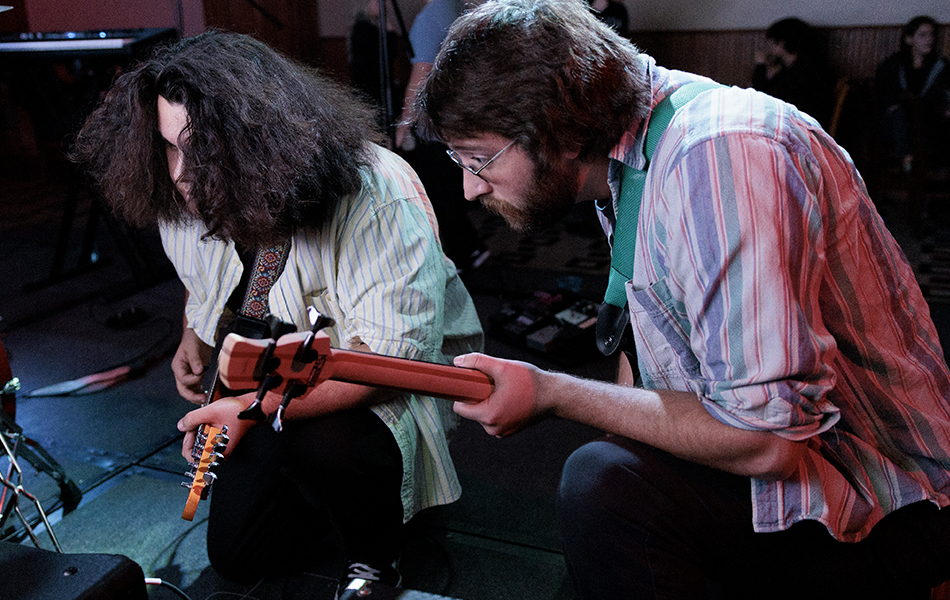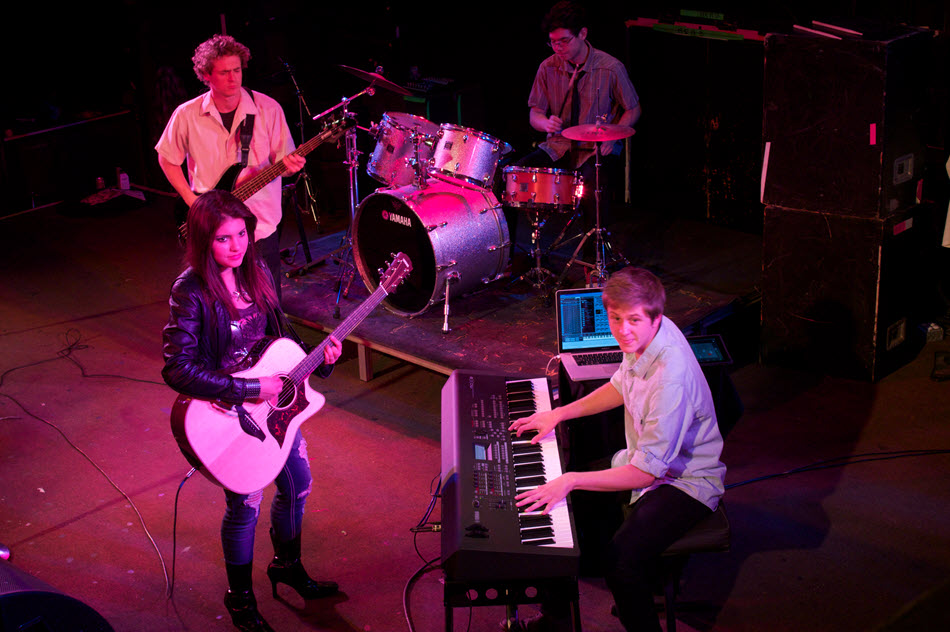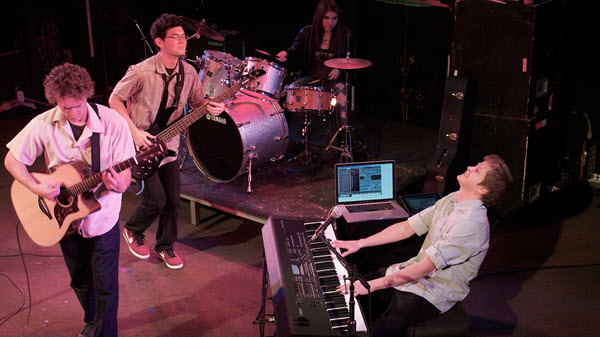Tagged Under:
Using Reverb and Delay In Live Sound, Part 1
Add spaciousness to your mix with these creative tools.
Two of the more fun audio tools are reverb and delay — effects that are used to add a sense of space to your mix. Let’s look at each, and then see how you can best use them in live sound.
The Basics
Reverb can be described as the sound left over in a room after the source stops. What do we mean by that? Let’s say you walk into a quiet, empty church and clap your hands. The handclap itself only lasts a fraction of a second, but then there’s an explosion of sound created by it being reflected off the walls, ceiling and floor. Those reflections create a reverberant sound, which we call reverb for short.
The amount of reverb produced depends on how big the room is and how reflective the surfaces are. What’s inside the room changes the character of the reverb, so an empty room will have a longer reverb time than a room that’s filled with people — because people and their clothing absorb sound. Reverb is very “dense,” meaning that there are so many reflections happening closely together that you don’t hear them separately. They’re kind of mushed together.
This is different from delay, which is sometimes called echo. Delay is also sound being reflected from a surface, but with delay you are able to hear a distinct repeat of the sound. For example, maybe you are watching a baseball game. You hear the crack of the bat, and then a moment later you hear it a second time. That’s because the sound hit the other side of the stadium and bounced back to you, creating a sort of duplicate. The repeat — the delay — is usually lower in volume than the original, and probably not as bright sounding.
Delay and reverb are really useful in both live mixing and in recording. They add a sense of space or distance to a sound, or can be used creatively to emphasize a lyric or the end of a solo by repeating it or making it last longer.
In the old days, reverb was created using live chambers, vibrating metal plates or springs, each of which produce distinctly different sounds. Delay was primarily created using analog tape machines, which sound great but are expensive and difficult to maintain. Nowadays we use digital processing to create reverb and delay effects such as those built into the Yamaha MG X/XU Series mixers.
Reverb Types
As an example, the entry-level Yamaha MG06X mixer provides several different reverb “programs” (types) such as Hall, Room, and Plate.
– Hall: simulates the environment of a concert hall. Hall reverbs tend to sound big, and last longer.
– Room: simulates the sound of a large room like an auditorium. Room reverbs are shorter than halls and sound smaller.
– Plate: simulates the sound of a vibrating metal plate. Plate reverb was very popular in the 1970s. It tends to sound thin and emphasizes the high frequencies of a sound.
The intermediate-level Yamaha MG20XU adds a few more reverb programs such as:
– Ambient: creates the sense of a small space around a sound. Ambient programs are much shorter and “tighter” than a hall, room or plate reverb.
– Early Reflection: This effect is not quite reverb since it includes only the shortest reflection paths. Imagine you are in a tiled bathroom and clap your hands. You wouldn’t hear a long washy reverb; instead, you’d hear a very short, tight series of reflections from the tile. This a good example of the early reflection effect.
– Gated reverb: This is an effect that was really popular in the 1980s, especially for snare drum. Gated reverb is non-linear, meaning it does not behave the way you’d expect. Normally, bigger rooms produce longer reverbs. With a gated reverb, the room sounds big but the end or “tail” of the reverb is cut off by a noise gate instead of fading smoothly (see the Tools of the Trade blog posting How To Use a Noise Gate.)
Delays
Delay effects are usually defined by two things: delay time and number of repeats.
Delay time is the amount of time before you hear the first repeat or echo. The number of repeats is exactly that. Longer delay times give the illusion of distance. If you shouted “hey!” at the wall of a handball court, the sound would reflect back at you a fraction of a second later. If you walked farther away from that wall and tried it again, it would take longer for your voice to reach the wall and bounce back to you. Delay time is usually expressed in milliseconds, abbreviated “ms.” One millisecond is 1/1000th of a second.
The delay time can usually be dialed in as a specific number, and it interacts with another important control called feedback. More feedback produces more repeats, but beware that adding excessive feedback to a delay can produce some unpredictable results like out-of-control looping echoes that get uncontrollably louder and louder.
Many different effects can be created simply by tweaking these two controls. For example, short delays (around 20 to 50 ms) produce a doubling effect. “Slap” delay like you hear on recordings from the 1950s is created using a slightly longer delay time of around 50 to 125 ms. Long, rolling delays have a delay time of 300 ms and up, often with a good deal of feedback.
As an example, the Yamaha MG06X provides three delay programs:
– Short: this produces a doubling effect
– Long: longer delay times than the Short delay.
– VO Echo: intended for use on vocals.
Reverb and Delay Parameters
Reverb and delay programs usually provide a number of adjustable parameters. This is a simply a fancy word for some aspect of the effect that you can tweak. For example, when you choose REV HALL 1 on the Yamaha MG10XU, the Parameter knob allows you to change the reverb time to suit the music you are mixing. If you choose the DELAY program, then the Parameter knob will allow you to adjust the delay time.
More advanced mixers like the digital Yamaha TF1 show the delay time in ms and give you separate control over delay time for the left and right channels. This allows you to do things like create “ping-pong” delays (delays that bounce between the left and right channels). The TF1 also allows you to create a rhythmic delay by entering song tempo in Beats Per Minute (BPM), or through “Tap Tempo,” a feature that lets you tap a button in time to the music, with the onboard computer automatically calculating the delay time based on your tapping! If your mixer doesn’t have those features, don’t be discouraged — you can always set delay or reverb time by ear.
In Part 2, we’ll talk about the way reverb and delay is added to a mix, and describe some creative applications, including instrument-specific tips.
Check out our other Tools of the Trade postings.
Click here for more information about Yamaha mixing consoles.













